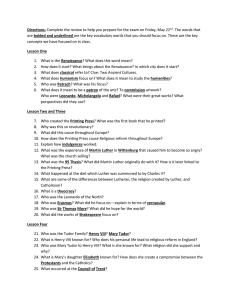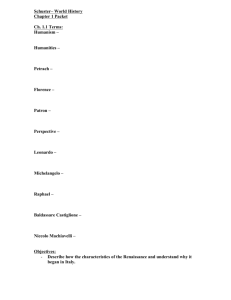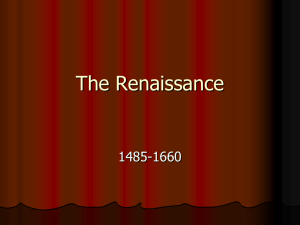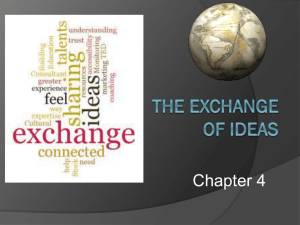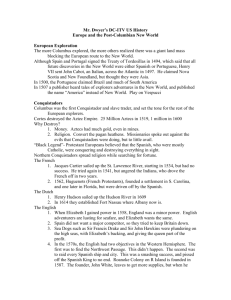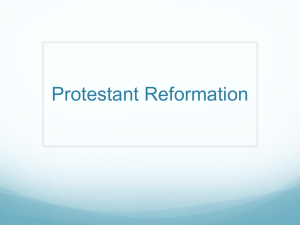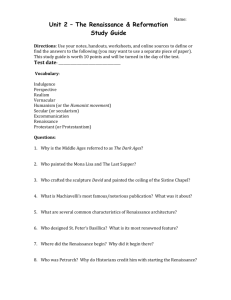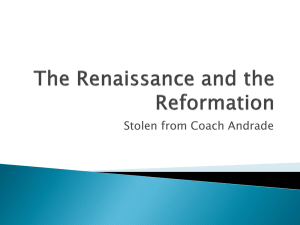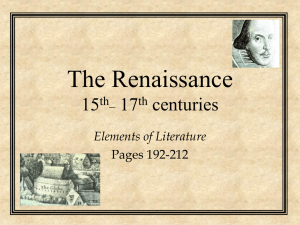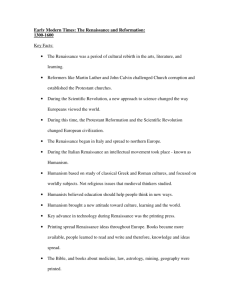Celebrating Humanity 1485-1625
advertisement
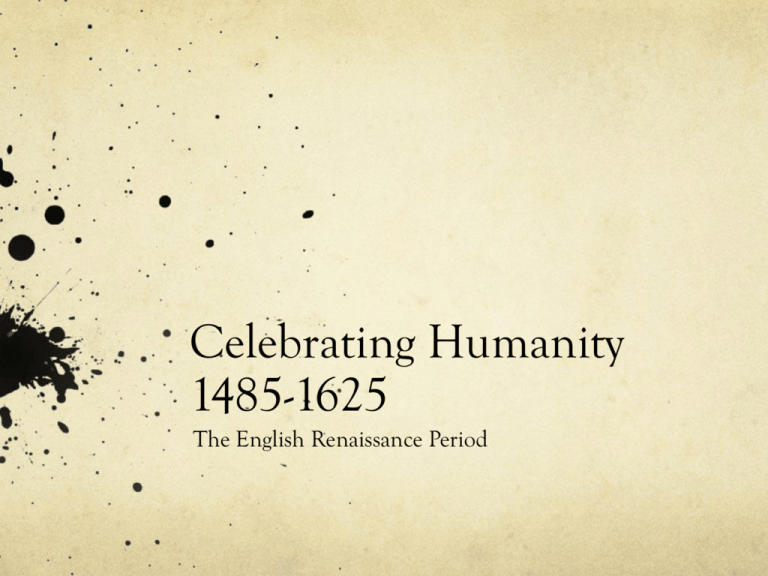
Celebrating Humanity 1485-1625 The English Renaissance Period Names and Terms to Know Renaissance Martin Luther Wars of the Roses Henry VIII Elizabeth I James I Mary Stuart Puritans Elizabethan Age Focus Questions What are the characteristics of the spirit of the Renaissance? In what ways did religion make an impact on English life the the 15th century? In what way does literature provide a forum for criticisms of social institutions during this period? Look at the Timeline on page 226… What two important religious works were published during this period? Name the two seafaring exploits during this period. Name two disasters, one in Britain and one in the world, that occurred in the period 1550-1570. Name the two events that indicate British presence in the New World. Historical Background Renaissance – slowly rose from Italian city-states to England. Scholars reacting against what they saw as the “dark ages” of medieval Europe and revived the learning of ancient Greece and Rome. “Rebirth” The Age of Exploration Renaissance thinking promoted exploration by sea. England’s participation began in 1497 when John Cabot reached Newfoundland. Laid basis for future English claims in North America. Religion Many people had grievances against the Roman Catholic Church. Edition of New Testament by the great Dutch scholar Erasmus raised questions about biblical interpretations. He paved the way for Martin Luther. Luther was a German monk who in 1517 nailed a list of dissenting beliefs to the door of a German church. Division in church, Lutheranism. Started the Protestant Reformation. The Tudors Ending of the War of the Roses and the founding of the Tudor dynasty in 1485 opened a new era in English life. Henry VII – rebuilt the nation’s treasury and established law and order. Henry VIII – his successor. Practicing Catholic but had problems when he wanted to divorce Catherine of Aragon because they did not have a son. He wanted an annulment so that he could marry Anne Boleyn. It was never granted but he married anyway. He seized the church’s English property and dissolved monasteries. He beheaded Thomas More because he refused to rebuke his faith. He married 6 times. He had two daughters Mary (Catholic) and Elizabeth (Protestant/Anglican) and one son Edward before he died in 1547. Religious Turmoil King Edward VI became king at the age of 9 and died at the age of 15. England was becoming more Protestant. When Mary took the throne she tried to reinstall Catholicism. Because she executed about 300 Protestants she was nicknamed “Bloody Mary.” Growing anti-Catholic sentiment Elizabeth I Received a Renaissance education and patron of the arts. Even though she reestablished the Church of England she instituted a policy of religious compromise. Mary Stuart, queen of Scotland was her one threat. She was Catholic and many believed her to be the true queen due to Henry’s divorce. She was imprisoned for 18 years and eventually beheaded. Stuarts and Puritans Elizabeth had named King James VI of Scotland her successor. Unlike his mother Mary he was a Protestant. James I was also a strong supporter of the arts. Jamestown, Virginia. James struggled with issues with Parliament, later a war would break out. He also persecuted the Puritans. Literature of the Period Narratives, poetry, dramas, and comedies. The Sonnet: Sidney, Spenser, and Shakespeare (14 lines usually in iambic pentameter). Pastoral Poetry: Marlowe and Raleigh (idealizes simplicity of rural life). Drama: Marlowe and Shakespeare The Globe Theater Elizabethan and Jacobean Prose – Sidney, Nash, Raleigh, Bacon, and The King James Bible

